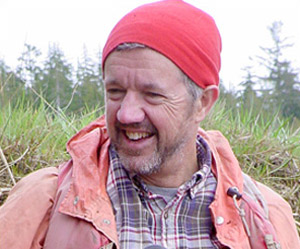 |
| Geologist Brian Atwater discovered evidence of a tsunami hit the Pacific Coast in 1700. (NPR) |
One of the worldÕs leading experts on tsunamis will present a public lecture at Dalhousie next week. DalhousieÕs Department of Earth Sciences is hosting Dr. Brian Atwater in a public lecture at 7 p.m. on Thursday, March 15, 2007 at Ondaatje Hall (Marion McCain Building) to describe the trans-Pacific detective work that led to the discovery of the January 26, 1700 tsunami.
After the 2004 Indian Ocean tsunami, we know how devastating such an event would have been to the First Nations peoples who lived along the west coast of America from California to northern British Columbia. The analogy between the 2004 earthquake and the Cascadia earthquake of 1700 is almost exact, and both will most certainly recur. In both cases, the earthquake ruptured the ocean floor for close to 800 continuous seconds (13 min), and both broke the ocean floor over a distance of about 1,000 km (equivalent to a distance from Halifax to beyond MontrŽal). Both created a similar-sized megatsunami that came ashore to the nearby continent within 15 to 20 minutes.
Brian Atwater will explain how we know details of the 1700 Cascadia event despite the absence of written languages in North America at the time and will compare the event to the more recent catastrophe.
ÒThis is absolutely one of the most intriguing and fascinating tales that one can read in the annals of modern science,” says local earth scientist Alan Ruffman describing AtwaterÕs work. ÒFurthermore, with a return period of 300-500 years we are again in the threat period and Canada has a limited time to get the building codes and tsunami warning system of coastal British Columbia in order and working 24/7 from here on in. The Cascadia seismic source zone will most certainly cause another massive earthquake and a megatsunami.”
IRIS is the Incorporated Research Institutions for Seismology in Washington, D.C. headed by Nova Scotia, native and Dalhousie geophysics graduate Dr. David Simpson. IRIS is a worldwide consortium of universities and government agencies dedicated to exploring the earth's interior. IRIS has Canadian members in the University of British Columbia, University of Toronto, University of Saskatchewan, McGill University and UniversitŽ de QuŽbec, as well as the Geological Survey of Canada in Vancouver. IRIS has many programs of an educational nature, seismic data distribution, and has made an invaluable contribution to the verification of a Comprehensive Test Ban Treaty aimed at preventing further testing of nuclear bombs. IRIS owns a significant pool of seismometers and recording gear for members to use whenever, or wherever, a significant seismic event occurs. IRIS is now in the first year of a five-year ÒCornerstone Facilities for Seismology and Earth Sciences” that involves US $35 million to 2011.
The SSA is the Seismic Society of America, also based in Washington; it was formed a hundred years ago and is a premier scientific society addressing seismological questions. IRIS and SSA joined in 2002 to launch and cosponsor their Distinguished Lectureship with two speakers annually made available free of charge to museums and universities.
2007 is the first time one of the IRIS/SSA Distinguished Lecturers has gone beyond the borders of the United States. Dr. AtwaterÕs visit is cosponsored by the Atlantic Geoscience Society comprising 300 geoscientists from all four Atlantic Provinces, the Geological Survey of Canada-Atlantic at the Bedford Institute of Oceanography, the Nova Scotia Institute of Science, and the BIO Oceans Association.
Brian Atwater is a geologist with the U.S. Geological Survey who is cross-appointed as an Affiliate Professor in the University of WashingtonÕs Department of Earth and Space Sciences who studies recent earthquakes in western North America. In 2005, Time magazine nominated him at age 56 as one of 100 most influential persons for the year. He is currently conducting tsunami deposits research on the December 2004 tsunami in the Indian Ocean in Indonesia, Thailand, India and on the Maldive Islands. He is working with scientists of the affected countries to understand the history of palaeotsunamis to better design the needed tsunami warning system as the Pacific has had for now almost 60 years.
